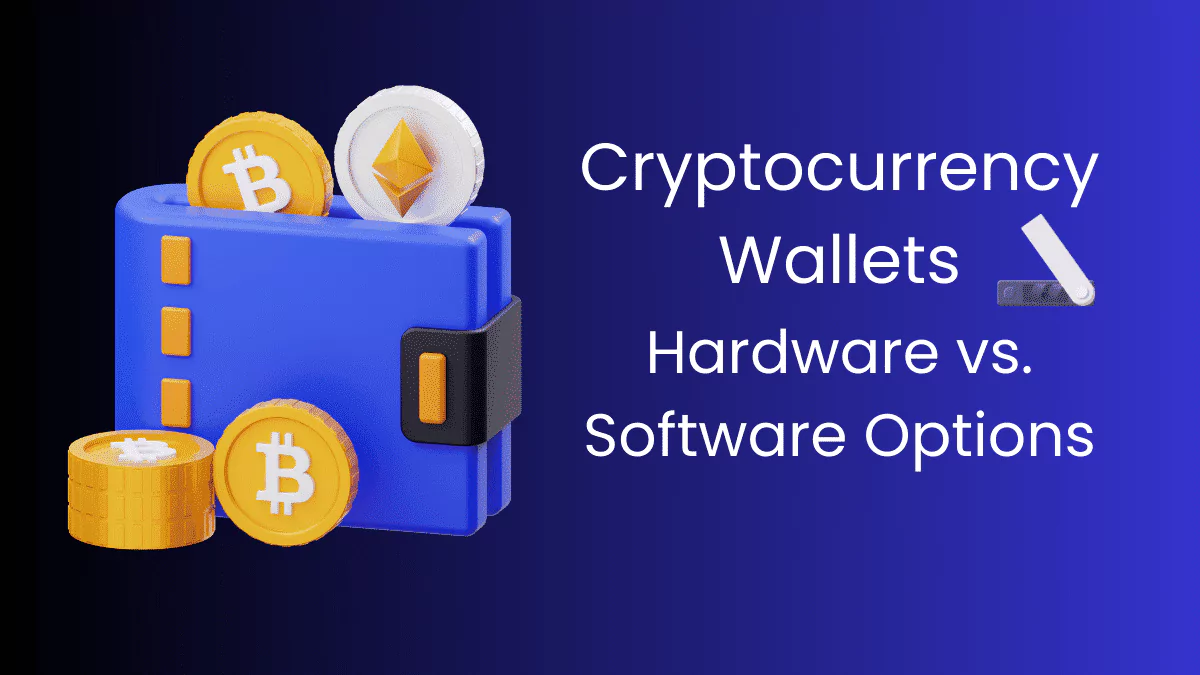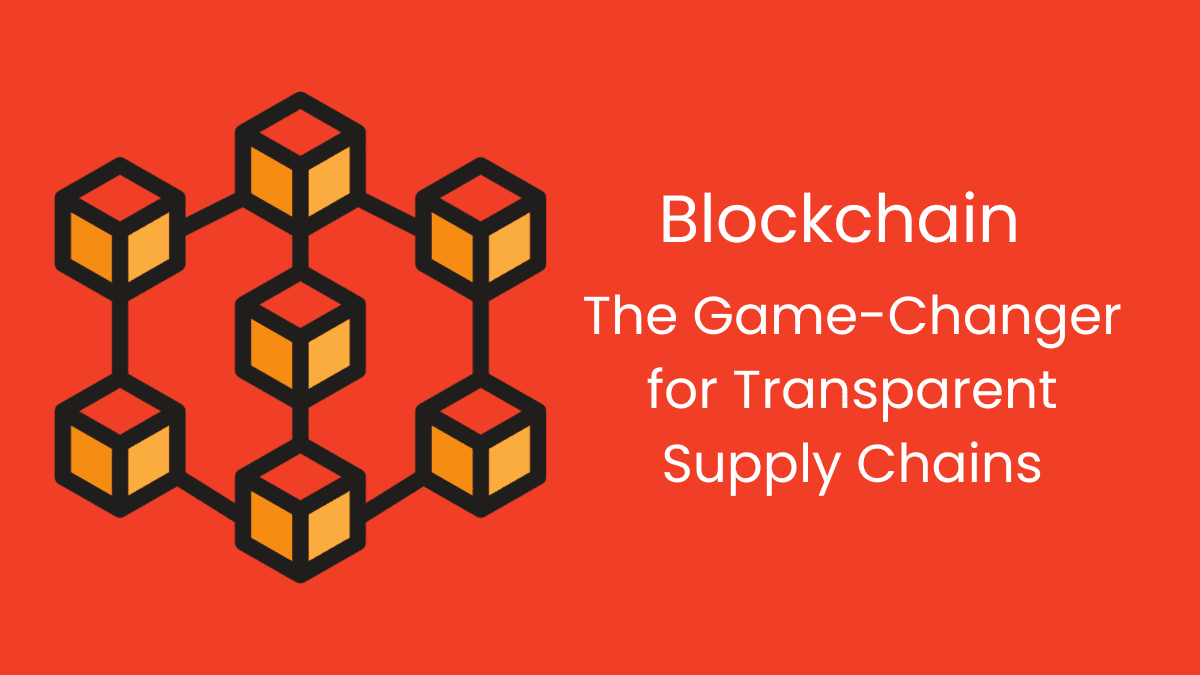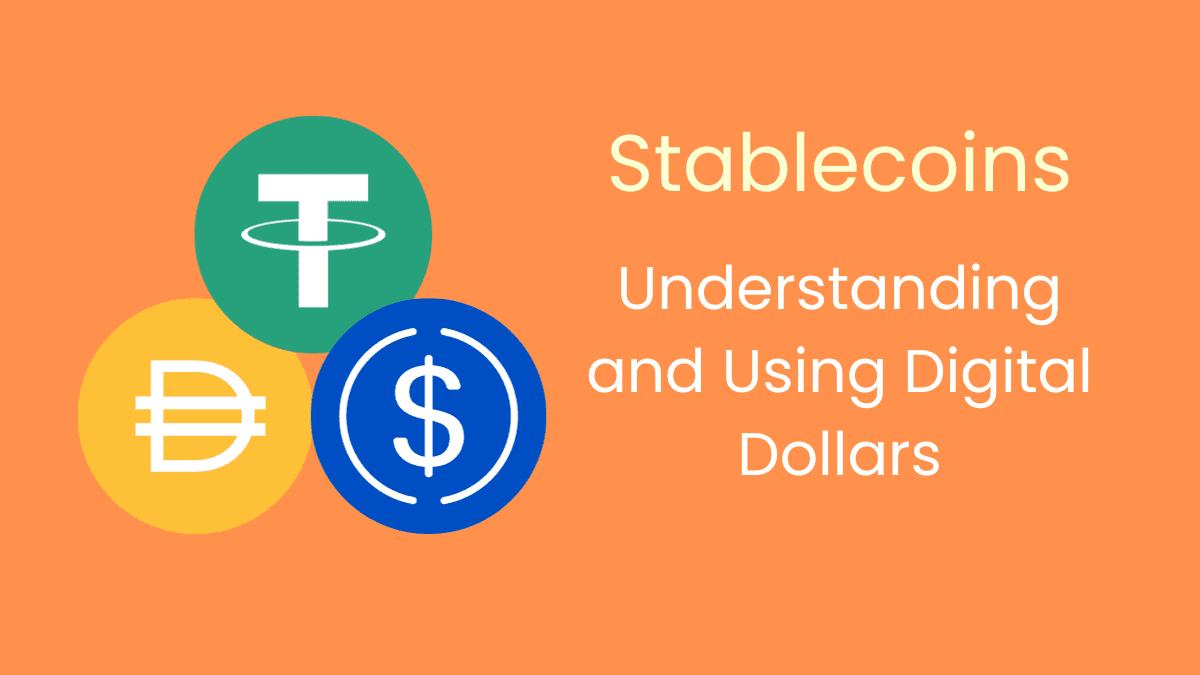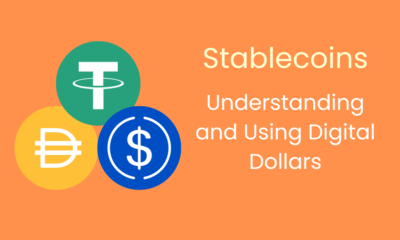Cryptocurrency
Cryptocurrency Wallets: Hardware vs. Software Options
Cryptocurrency wallets are essential tools that enable users to interact with the blockchain.. Choosing the right cryptocurrency wallet is a critical step.

Cryptocurrency has taken the financial world by storm, offering a decentralized alternative to traditional currencies. However, with this innovation comes the responsibility of safeguarding your digital assets. This is where cryptocurrency wallets come into play. They serve as the digital vaults for your cryptocurrencies, allowing you to store, send, and receive them securely. In this guide, we’ll explore the two main types of cryptocurrency wallets: hardware and software options. By understanding the strengths and considerations of each, you’ll be equipped to make an informed decision for managing your digital wealth.
Chapter 1: Understanding Cryptocurrency Wallets
Cryptocurrency wallets are essential tools that enable users to interact with the blockchain. They store the necessary information to access and manage your cryptocurrencies. Two primary types of wallets exist: hardware and software. Hardware wallets are physical devices, whereas software wallets are digital applications. Both serve the same purpose, but they differ significantly in their approach to security and accessibility.
Chapter 2: The Basics of Hardware Wallets
Security Meets Tangibility
Hardware wallets are physical devices designed exclusively for storing cryptocurrencies. They operate offline, making them immune to online threats like hacking and phishing attacks. The private keys, which grant access to your digital assets, never leave the device. This isolation provides an unparalleled level of security.
Examples of Hardware Wallets
- Ledger Nano S: Known for its robust security features and user-friendly interface, the Ledger Nano S is a popular choice among cryptocurrency enthusiasts.
- Trezor: Trezor is another reputable hardware wallet brand that emphasizes security and ease of use. It offers advanced features for experienced users while remaining accessible for beginners.
Chapter 3: The Advantages of Software Wallets
Convenience Meets Accessibility
Software wallets, in contrast, are digital applications or programs that allow users to manage their cryptocurrencies. They come in various forms, including desktop, mobile, and online wallets. Software wallets are highly accessible, making them ideal for day-to-day transactions and easy access to funds.
Examples of Software Wallets
- Exodus Wallet: Known for its intuitive user interface and multi-currency support, Exodus is a popular choice for software wallet users.
- Trust Wallet: Acquired by Binance, Trust Wallet is a mobile wallet known for its security features and seamless integration with decentralized exchanges.
Chapter 4: Comparing Security Features
Hardware Wallet Security
Hardware wallets operate in an air-gapped environment, meaning they are never connected to the internet during transactions. This isolation shields them from online threats. Additionally, they require users to set up a Personal Identification Number (PIN) and generate a recovery seed, adding layers of security.
Software Wallet Security
While software wallets offer convenience, they are more susceptible to online risks. Malware and phishing attacks can compromise your private keys. However, software wallets implement encryption and other security measures to mitigate these risks. Users should take extra precautions to protect their software wallets.
Chapter 5: Use Cases and Recommendations
When to Choose a Hardware Wallet
Hardware wallets shine in scenarios where security is paramount. They are ideal for long-term storage and safeguarding significant cryptocurrency holdings. If you’re looking for the utmost security and plan to hold your assets for an extended period, a hardware wallet is a wise choice.
When to Choose a Software Wallet
Software wallets are perfect for users who value accessibility and frequent transactions. They are suitable for making daily purchases and managing smaller amounts of cryptocurrency. If you’re new to cryptocurrencies and want a user-friendly experience in using Cryptocurrency Wallets, a software wallet is a great starting point.
Chapter 6: Tips for Safe Wallet Usage
Regardless of the type of cryptocurrency wallets you choose, following these tips will help ensure the security of your cryptocurrency assets:
- Keep your wallet software up-to-date.
- Create strong, unique passwords.
- Enable two-factor authentication (2FA) wherever possible.
- Safely store your recovery seed or mnemonic phrase offline.
- Beware of phishing attempts and only download wallet software from trusted sources.
- Regularly review your transactions for any suspicious activity.
Choosing the right cryptocurrency wallet is a critical decision in your crypto journey. Whether you opt for the enhanced security of a hardware wallet or the convenience of a software wallet, understanding the strengths and weaknesses of each is paramount. By following security best practices and staying informed, you can confidently manage your cryptocurrency assets while safeguarding your digital wealth. Remember that the crypto landscape is ever-evolving, so ongoing vigilance is key to a secure and successful journey.
Additional Resources
Explore these resources to make informed decisions about your cryptocurrency wallet choices and security practices.
Frequently Asked Questions (FAQs)
Q1: What is a cryptocurrency wallet?
A: A cryptocurrency wallet is a digital tool that allows you to store, send, and receive cryptocurrencies. It manages your private keys, which are essential for accessing and managing your digital assets.
Q2: Are hardware wallets expensive?
A: Hardware wallets have an upfront cost, but they offer a high level of security, making them a valuable investment for those with substantial cryptocurrency holdings. Prices vary depending on the brand and features.
Q3: Can I use both hardware and software wallets?
A: Yes, many cryptocurrency users employ a combination of hardware and software wallets. Hardware wallets are ideal for long-term storage, while software wallets offer convenience for daily transactions.
Q4: Are software wallets safe for beginners?
A: Software wallets can be suitable for beginners, but users must take security precautions seriously. Learning about best practices is essential for safe usage, and beginners should start with small amounts.
Q5: How can I recover my cryptocurrency if I lose my hardware wallet?
A: Hardware wallets provide a recovery seed or mnemonic phrase. If you lose your hardware wallet, you can use this seed to recover your cryptocurrencies on a new device. Ensure you store this seed securely.
Q6: Can I access my software wallet from multiple devices?
A: Many software wallets offer multi-device support, allowing you to access your wallet from different devices. However, ensure you follow security best practices and use strong passwords.
Q7: Are there any risks associated with online software wallets?
A: Online software wallets, often referred to as “hot wallets,” are more susceptible to online risks like hacking. It’s essential to use reputable wallet providers, enable security features like 2FA, and keep your software up-to-date.
Q8: What should I do if I forget my hardware wallet PIN?
A: Forgetting your hardware wallet PIN can be problematic, but it’s usually possible to reset the device and set it up again using your recovery seed. Refer to your specific hardware wallet’s instructions for the recovery process.
Q9: How can I check the balance of my cryptocurrency in a hardware wallet?
A: To check your cryptocurrency balance in a hardware wallet, you’ll need to connect the wallet to a compatible software application or online service. The wallet won’t display your balance on its own; it’s designed for security.
Q10: Can I transfer cryptocurrencies directly from a hardware wallet to a software wallet?
A: Yes, you can transfer cryptocurrencies from a hardware wallet to a software wallet when needed. Follow the instructions provided by your software wallet for receiving cryptocurrencies.
These frequently asked questions provide additional insights into the considerations and practical aspects of using Cryptocurrency Wallets both hardware and software wallets for managing your cryptocurrency assets. Always prioritize security and informed decision-making in your crypto journey.
Read More: How to Buy and Store Cryptocurrency Safely
Cryptocurrency
Cryptocurrency Regulation: What You Need to Know
In the ever-evolving world of cryptocurrencies, cryptocurrency regulation frameworks play a crucial role in shaping how these digital assets are bought, sold, and traded.

In the ever-evolving world of cryptocurrencies, regulatory frameworks play a crucial role in shaping how these digital assets are bought, sold, and traded. As the popularity of cryptocurrencies like Bitcoin and Ethereum continues to grow, understanding the regulatory landscape becomes paramount for investors, traders, and enthusiasts. In this comprehensive guide, we’ll delve into the intricacies of cryptocurrency regulation, answering key questions and shedding light on the current state of affairs.
The Basics of Cryptocurrency
Definition and Function
Cryptocurrencies are digital or virtual currencies that use cryptography for security. They operate on decentralized networks based on blockchain technology, which is a distributed ledger that records all transactions across a network of computers.
Key Players
While Bitcoin remains the pioneer of cryptocurrencies, there are thousands of alternative coins (altcoins) with diverse functionalities and use cases. Ethereum, for instance, introduced smart contracts, allowing for programmable, self-executing agreements.
The Need for Cryptocurrency Regulation
Volatility and Speculation
The cryptocurrency market is notorious for its extreme price volatility. This makes it an attractive yet highly speculative investment, leading to concerns about investor protection.
Security Concerns
Instances of fraud, hacks, and scams are not uncommon in the cryptocurrency space. Regulatory measures are needed to safeguard users and their assets.
Anti-Money Laundering (AML)
Cryptocurrencies have been associated with illicit activities due to their pseudonymous nature. AML regulations aim to prevent money laundering and other illegal practices.
Regulatory Bodies and Their Roles
Government Agencies
Regulatory bodies like the U.S. Securities and Exchange Commission (SEC) and the UK’s Financial Conduct Authority (FCA) play pivotal roles in overseeing cryptocurrency activities within their jurisdictions.
International Organizations
Global organizations such as the Financial Action Task Force (FATF) set standards and guidelines for anti-money laundering and counter-terrorism financing, influencing cryptocurrency regulations worldwide.
Existing Cryptocurrency Regulations
United States
In the U.S., cryptocurrencies are considered securities, commodities, or currencies depending on their use and characteristics. The regulatory approach varies based on these classifications.
European Union
The EU has taken a multi-faceted approach to cryptocurrency regulation, aiming to balance innovation with consumer protection and market integrity.
Asia
Countries like Japan have embraced cryptocurrencies, while China has imposed strict bans. South Korea, on the other hand, maintains a cautious yet evolving stance.
Recent Regulatory Developments
Cryptocurrency Taxation
Taxation policies for cryptocurrencies differ globally. Some countries tax them as assets, while others treat them as currencies.
Initial Coin Offerings (ICOs)
ICOs, a fundraising method for new cryptocurrency projects, have faced increasing regulatory scrutiny. Some countries require compliance with securities laws.
Know Your Customer (KYC) and Anti-Money Laundering (AML)
Exchanges and businesses dealing with cryptocurrencies are often required to implement KYC and AML procedures to verify the identities of their users and monitor transactions.
Cryptocurrency Compliance and Best Practices
Tips for Cryptocurrency Investors
- Stay informed about local regulations.
- Use reputable exchanges with robust compliance measures.
- Keep meticulous records of transactions for tax purposes.
Regulatory-Compliant Exchanges
Platforms like Coinbase, Kraken, and Binance have prioritized regulatory compliance, providing a safer environment for traders and investors.
Frequently Asked Questions (FAQs)
- Is cryptocurrency legal in my country?
- It depends on your country’s specific regulations. Some nations have embraced cryptocurrencies, while others have imposed bans or restrictions.
- How are cryptocurrencies taxed?
- Taxation policies vary, but in most countries, cryptocurrencies are treated as taxable assets. It’s important to report gains and losses accurately.
- What is the role of the SEC in cryptocurrency regulation?
- The SEC oversees the securities industry in the U.S., which includes certain cryptocurrencies and tokens. It enforces regulations to protect investors.
- Are there any international regulations for cryptocurrencies?
- Organizations like FATF set global standards for cryptocurrency regulation, influencing policies in member countries.
- What are the penalties for non-compliance with cryptocurrency regulations?
- Penalties can range from fines to legal consequences, depending on the severity of the violation and the jurisdiction.
- Do I need to report my cryptocurrency holdings to tax authorities?
- In most countries, you are required to report your cryptocurrency holdings for tax purposes.
- How can I ensure the security of my cryptocurrency investments in a regulated environment?
- Use reputable exchanges, enable two-factor authentication, and store your assets in secure wallets.
- Are decentralized cryptocurrencies subject to the same regulations as centralized ones?
- Regulatory approaches may differ, but decentralized cryptocurrencies are not immune to compliance requirements.
- What are the key differences between cryptocurrency regulations in the U.S. and Europe?
- The U.S. tends to have a more nuanced approach, while the EU focuses on harmonizing regulations across member states.
- How can I verify the legitimacy of a cryptocurrency exchange under regulatory guidelines?
- Look for exchanges that are licensed, have clear compliance policies, and conduct regular security audits.
Future of Cryptocurrency Regulation
Emerging Trends
As the cryptocurrency space matures, we can expect further regulatory clarity, with potential advancements in areas like decentralized finance (DeFi) and central bank digital currencies (CBDCs).
Industry Response
The cryptocurrency industry will continue to adapt to evolving regulations, with an increased focus on compliance and consumer protection.
Navigating the regulatory landscape of cryptocurrencies is essential for anyone involved in this dynamic market. Staying informed about the latest developments and adhering to compliance measures ensures a safer and more sustainable cryptocurrency ecosystem for all stakeholders.
References and Further Reading
For readers interested in exploring this topic further, the following resources provide valuable insights into cryptocurrency regulation:
- Financial Action Task Force (FATF)
- U.S. Securities and Exchange Commission (SEC)
- Financial Conduct Authority (FCA)
- Coinbase
- Kraken
- Binance
Read More: Blockchain: The Game-Changer for Transparent Supply Chains
Cryptocurrency
Blockchain: The Game-Changer for Transparent Supply Chains
Blockchain technology is poised to revolutionize supply chain management by addressing long-standing issues of transparency, security, and efficiency.

In today’s globalized world, supply chain management has become a critical aspect of businesses across various industries. It involves a complex network of manufacturers, suppliers, distributors, and retailers, all working together to ensure products reach consumers efficiently. However, traditional supply chain systems often suffer from issues like lack of transparency, counterfeiting, inefficiencies, and trust gaps between stakeholders. This is where blockchain technology enters the scene, offering a solution that can revolutionize supply chain management as we know it.
Understanding Blockchain Technology
Blockchain, in its simplest form, is a decentralized digital ledger. It works by recording transactions in blocks, which are then linked together in a chain. What sets blockchain apart is its decentralization and immutability. Unlike traditional centralized systems, there’s no single point of control, making it extremely secure and transparent.
Key features of blockchain include:
- Transparency: Transactions are visible to all authorized parties in real time.
- Security: Data is encrypted, and once recorded, it cannot be altered.
- Traceability: Each step in the chain is recorded, allowing for easy tracing of products.
Current Challenges in Supply Chain Management
Before diving into how blockchain addresses these challenges, let’s look at the issues plaguing traditional supply chains:
Lack of Transparency
Traditional supply chains often lack transparency, making it difficult for stakeholders to track products accurately. This opaqueness can lead to inefficiencies, delays, and increased costs.
Counterfeiting and Fraud
Counterfeit products are a growing concern in global supply chains. The lack of a reliable system to verify product authenticity opens the door for fraudsters.
Inefficiencies and Delays
Manual verifications, paperwork, and communication gaps are common culprits for inefficiencies and delays in supply chains. These inefficiencies can result in increased costs and frustrated customers.
Trust Issues
Trust issues among stakeholders can lead to disputes, delays, and even legal conflicts. Establishing a trust can be challenging, especially in complex, multi-party supply chains.
How Blockchain Addresses Supply Chain Issues
Blockchain technology offers innovative solutions to these challenges:
Transparency and Traceability
Blockchain provides real-time visibility into the entire supply chain process. Each transaction is recorded and visible to authorized parties, reducing the chances of errors, fraud, and disputes.
Authentication and Anti-Counterfeiting
Blockchain’s secure, immutable record-keeping helps verify the authenticity of products. Consumers can scan QR codes or use other methods to ensure they’re buying genuine items.
Smart Contracts
Smart contracts, self-executing agreements with predefined rules, automate various supply chain processes. These contracts trigger actions like payments, quality checks, and deliveries when conditions are met, reducing the need for intermediaries and minimizing errors.
Immutable Record Keeping
Blockchain’s immutability ensures that once data is recorded, it cannot be altered without consensus from all participants. This guarantees the integrity of the supply chain data.
Case Studies and Examples
Several real-world examples showcase the effectiveness of blockchain in supply chain management:
Walmart and IBM’s Food Trust Network
Walmart and IBM have partnered to create the Food Trust Network, which uses blockchain to track the journey of food products from farm to store shelves. This ensures food safety and transparency, benefiting both consumers and producers.
Maersk and IBM’s TradeLens
Maersk, one of the world’s largest shipping companies, has adopted blockchain through IBM’s TradeLens platform. This system enhances the efficiency of global shipping by reducing paperwork, speeding up customs clearance, and enhancing overall transparency.
Everledger and Diamond Verification
Everledger employs blockchain to trace the provenance of diamonds. This helps eliminate the trade in conflict diamonds and ensures consumers purchase ethically sourced stones.
Challenges and Concerns with Implementing Blockchain
While blockchain holds tremendous promise, it’s not without challenges:
Scalability Issues
Current blockchain technology faces limitations in terms of transaction speed and volume. Scaling up to meet the demands of global supply chains remains a work in progress.
Integration with Existing Systems
Adopting blockchain in established supply chains can be complex. It requires integrating with legacy systems and overcoming resistance to change.
Regulatory and Legal Considerations
Navigating the regulatory landscape and addressing legal concerns, especially in cross-border supply chains, can be a hurdle.
Future of Blockchain in Supply Chain Management
Despite these challenges, the future of blockchain in supply chain management looks promising:
Emerging Trends
Technological advancements, like integrating blockchain with the Internet of Things (IoT), will enhance supply chain monitoring and automation.
Potential Industry Disruptions
Blockchain has the potential to reshape various industries, making supply chains more efficient, transparent, and secure.
Blockchain technology is poised to revolutionize supply chain management by addressing long-standing issues of transparency, security, and efficiency. While challenges exist, the benefits of implementing blockchain are evident in real-world use cases. As businesses continue to adopt this innovative technology, we can expect to see more efficient and trustworthy supply chains in the near future.
FAQs
- What is blockchain technology in supply chain management?
- Answer: Blockchain technology is a decentralized digital ledger that records transactions in a transparent and secure manner, offering traceability and accountability throughout the supply chain.
- How does blockchain enhance supply chain transparency?
- Answer: Blockchain provides real-time visibility into the movement of goods, enabling stakeholders to monitor and verify transactions, reducing opacity and fraud.
- What are smart contracts and how do they benefit supply chains?
- Answer: Smart contracts are self-executing agreements that automate processes in supply chains, ensuring compliance with predefined rules, and reducing the need for intermediaries.
- Can blockchain technology prevent counterfeit products in the supply chain?
- Answer: Yes, blockchain’s immutable record-keeping helps verify product authenticity, making it difficult for counterfeit products to enter the supply chain unnoticed.
- Which industries are adopting blockchain for supply chain management?
- Answer: Industries such as food, pharmaceuticals, logistics, and luxury goods are actively adopting blockchain to improve transparency and efficiency.
- What are the challenges of integrating blockchain into existing supply chain systems?
- Answer: Integrating blockchain with legacy systems can be complex, requiring careful planning and overcoming resistance to change.
- How does blockchain address trust issues in complex supply chains?
- Answer: Blockchain builds trust through its transparent, tamper-resistant ledger, helping to reduce disputes and delays among supply chain participants.
- Are there any regulatory considerations for using blockchain in supply chain management?
- Answer: Yes, navigating the regulatory landscape, especially in cross-border supply chains, is a challenge that businesses using blockchain must address.
- What are some emerging trends in blockchain for supply chain management?
- Answer: Emerging trends include integrating blockchain with IoT devices for real-time monitoring and automation, and enhancing supply chain efficiency.
- What are the potential long-term disruptions that blockchain can bring to supply chain industries?
- Answer: Blockchain has the potential to revolutionize supply chains by making them more efficient, secure, and transparent, which could reshape various industries.
References and Further Reading
- Walmart Food Trust Network
- Maersk TradeLens
- Everledger – Diamond Verification
Read More:
Master Stablecoins: Your Guide to Digital Dollars
Cryptocurrency Wallets: Hardware vs. Software Options
Cryptocurrency
Master Stablecoins: Your Guide to Digital Dollars
Stablecoins provide a bridge between the crypto world and real-world economies, allowing users to transact without the fear of sudden price fluctuations.

In the fast-paced world of cryptocurrency, stability has often been a sought-after but elusive feature. This is where stablecoins enter the scene, offering the reliability of traditional currencies while harnessing the power of blockchain technology. In this comprehensive guide, we will delve into the world of stablecoins, focusing on their core concept, mechanisms, use cases, and practical tips for using these digital dollars effectively.
Chapter 1: What Are Stablecoins?
Defining Stability in a Volatile Space
Cryptocurrencies like Bitcoin and Ethereum are known for their price volatility, making them unsuitable for everyday transactions. Stablecoins, however, are a different breed. They are cryptocurrencies designed to maintain a stable value, often pegged to traditional currencies like the US dollar.
Stablecoins provide a bridge between the crypto world and real-world economies, allowing users to transact without the fear of sudden price fluctuations.
Chapter 2: How Do Stablecoins Work?
2.1. Backing Mechanisms
Stablecoins achieve stability through various backing mechanisms:
Fiat-Collateralized: Some stablecoins are backed by reserves of traditional fiat currencies, typically held in a bank account. Each issued stablecoin is supposed to be fully backed by an equivalent amount of fiat currency.
Crypto-Collateralized: Others are backed by other cryptocurrencies, such as Ethereum or Bitcoin. These stablecoins use smart contracts to maintain their peg.
Algorithmic: A unique category of stablecoins uses algorithms and smart contracts to control the supply of the coin. These coins maintain stability without direct backing.
2.2. Centralized vs. Decentralized Stablecoins
Stablecoins can be centralized or decentralized. Centralized stablecoins are typically controlled by a central entity and operate on traditional financial infrastructure. In contrast, decentralized stablecoins leverage blockchain technology and smart contracts for transparency and autonomy.
Chapter 3: Use Cases of Stablecoins
3.1. Trading and Investment
Stablecoins serve as safe havens during cryptocurrency market volatility. Traders often use stablecoins to park their funds temporarily when they anticipate market downturns. Additionally, stablecoins are used as trading pairs on cryptocurrency exchanges, providing liquidity and facilitating quick transactions.
3.2. Cross-Border Transactions
One of the most prominent use cases for stablecoins is cross-border transactions. Sending and receiving digital dollars is faster and more cost-effective than traditional international money transfers. Stablecoins eliminate the need for intermediaries like banks, reducing fees and delays.
3.3. Remittances and Financial Inclusion
Stablecoins have the potential to revolutionize remittances, making it easier for individuals to send money across borders to support their families. They can also provide financial services to unbanked and underbanked populations, promoting financial inclusion.
3.4. Decentralized Finance (DeFi)
Stablecoins are the lifeblood of the decentralized finance (DeFi) ecosystem. They are used for lending, borrowing, yield farming, and liquidity provision in various DeFi protocols. Stablecoins enable users to earn interest on their assets and access decentralized financial services without relying on traditional banks.
Chapter 4: How to Use Stablecoins
4.1. Creating a Wallet
To start using stablecoins, you need a cryptocurrency wallet. You can choose between centralized wallets offered by exchanges or decentralized wallets that give you more control over your funds.
4.2. Purchasing Stablecoins
You can acquire stablecoins by purchasing them on cryptocurrency exchanges. You can trade your fiat currency or other cryptocurrencies for stablecoins. Popular stablecoins include USDC, USDT, and DAI.
4.3. Sending and Receiving Stablecoins
Sending and receiving stablecoins is straightforward. You need the recipient’s wallet address to initiate a transaction. Transaction fees and confirmation times vary depending on the blockchain network used.
4.4. Storing Stablecoins
It’s crucial to store your stablecoins securely. You can use hot wallets (online) for convenience or cold wallets (offline) for enhanced security. Cold wallets are recommended for long-term storage.
4.5. Monitoring and Managing Stablecoins
Keep track of your stablecoin holdings and transactions. Regularly check your wallet for updates and security patches. Manage your stablecoins with a focus on security and risk management.
Chapter 5: Risks and Challenges of Stablecoins
5.1. Regulatory Risks
The regulatory landscape for stablecoins is evolving. Be aware of the regulatory environment in your region, as governments are increasingly scrutinizing stablecoin projects. Stay informed about changes in regulations that may affect your use of stablecoins.
5.2. Counterparty Risk
Centralized stablecoins come with counterparty risk. If the issuing entity faces financial difficulties, it can impact the stability of the stablecoin. Understand the entity backing the stablecoin and assess its credibility.
5.3. Smart Contract Risk
Decentralized stablecoins often rely on smart contracts. While these contracts are designed to be secure, vulnerabilities can exist. Conduct thorough due diligence when participating in DeFi projects that use stablecoins.
Stablecoins offer a bridge between traditional finance and the crypto world, providing stability and practical use cases. Whether you’re a trader, an investor, or someone looking for efficient cross-border transactions, stablecoins can be a valuable addition to your cryptocurrency portfolio.
However, it’s crucial to understand the mechanisms, use cases, and risks associated with digital dollars. By following best practices and staying informed, you can make the most of stablecoins in a rapidly evolving crypto landscape.
Additional Resources
For more information on stablecoins and the latest developments in the world of digital dollars, explore these reputable sources, exchanges, and wallet providers:
Investigate these resources to stay updated and make informed decisions regarding your stablecoin journey in the cryptocurrency space.
Frequently Asked Questions (FAQs)
Q1: What exactly are stablecoins?
A: Stablecoins are a type of cryptocurrency designed to maintain a stable value, often pegged to traditional currencies like the US dollar. They offer the stability lacking in many other cryptocurrencies, making them suitable for various use cases.
Q2: How do stablecoins achieve price stability?
A: Stablecoins use various mechanisms for stability, including backing by fiat currencies, cryptocurrencies, or algorithmic control. These mechanisms ensure that the value of a stablecoin remains relatively constant over time.
Q3: Are stablecoins as volatile as other cryptocurrencies like Bitcoin?
A: No, stablecoins are not as volatile as cryptocurrencies like Bitcoin. They are designed to maintain a stable value, which means their prices remain relatively constant, making them suitable for everyday transactions.
Q4: What are the main use cases for stablecoins?
A: Stablecoins have several use cases, including trading and investment, cross-border transactions, remittances, and participation in decentralized finance (DeFi) platforms. They offer a stable digital alternative to traditional money.
Q5: Are stablecoins only used in the crypto world?
A: While stablecoins originated in the crypto world, their use extends beyond it. They are increasingly used for various financial transactions, including cross-border payments and lending, outside the cryptocurrency ecosystem.
Q6: How can I convert traditional currency into stablecoins?
A: You can convert traditional currency into stablecoins through cryptocurrency exchanges that offer trading pairs between fiat currencies and stablecoins. These exchanges allow you to purchase stablecoins using your local currency.
Q7: Are there risks associated with using stablecoins?
A: Yes, there are risks to consider. These may include regulatory risks, counterparty risks (for centralized stablecoins), and smart contract risks (for decentralized stablecoins). It’s important to be aware of these risks and take appropriate precautions.
Q8: Can I use stablecoins for long-term investments?
A: While stablecoins are primarily designed for stability, they may not provide significant returns for long-term investments. Many investors use stablecoins as a temporary safe haven or for trading purposes, not for long-term growth.
Q9: What’s the difference between centralized and decentralized stablecoins?
A: Centralized stablecoins are controlled by a central entity and rely on traditional financial infrastructure. Decentralized stablecoins operate on blockchain technology and smart contracts, offering more autonomy and transparency.
Q10: Are there any limits on using stablecoins for cross-border transactions?
A: In most cases, there are no limits on using stablecoins for cross-border transactions. However, it’s essential to consider local regulations and the policies of the exchange or wallet you’re using to ensure compliance with any restrictions.
Read More: Cryptocurrency Wallets: Hardware vs. Software Options












Pingback: Master Stablecoins: Your Guide to Digital Dollars
Pingback: Blockchain: The Game-Changer for Transparent Supply Chains